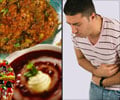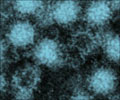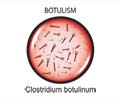Having a sound knowledge of the intricate structure of the outer layer of noroviruses, helps scientists develop new treatment options for food poisoning.

In vaccines, specific antibodies recognize the capsids and bind to them so they can no longer interact with human cells. "We need to understand what the norovirus capsid shapes actually look like, and the shape differences between different strains," said James Jung, a postdoctoral fellow in Dr. Leemor Joshua-Tor's lab at Cold Spring Harbor Laboratory (CSHL).
Jung and Joshua-Tor led a team to solve the high-resolution structures of four different strains of noroviruses using a cryo-electron microscope. This allowed them to see the intricate architecture of virus shells in high-definition. Their findings are published in the journal PNAS.
Jung gleaned new insights that could help in guiding the development of therapeutics to fight norovirus infection. "Previously, it was thought that the norovirus shells exist in single-sized assemblies consisting of 180 building blocks and 90 surface spikes. What we found was an unexpected mixture of different shell sizes and shapes. We found a smaller form, which consists of just 60 building blocks with 30 surface spikes placed further apart. We also found larger shells made out of 240 building blocks with 120 surface spikes that are lifted significantly above the base of the shell and form a two-layered architecture that could interact differently with the human cells," he said.
The spikes on the shell interact with the host. Jung found that the distance and orientation of the spikes varied across the different strains of noroviruses. "That means each strain will interact differently with human cells," Jung explained. "The way the antibodies bind is also going to be different. Vaccines should be formulated to take into account the variations across strains and structural forms."
Source-Eurekalert















